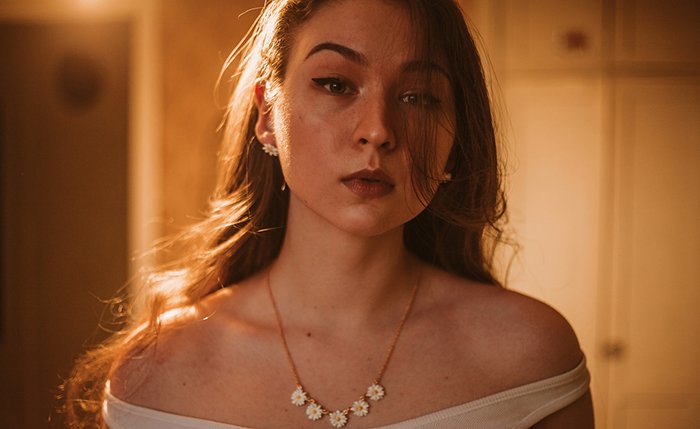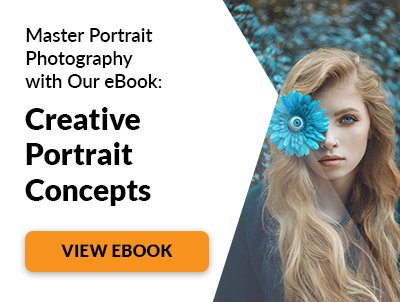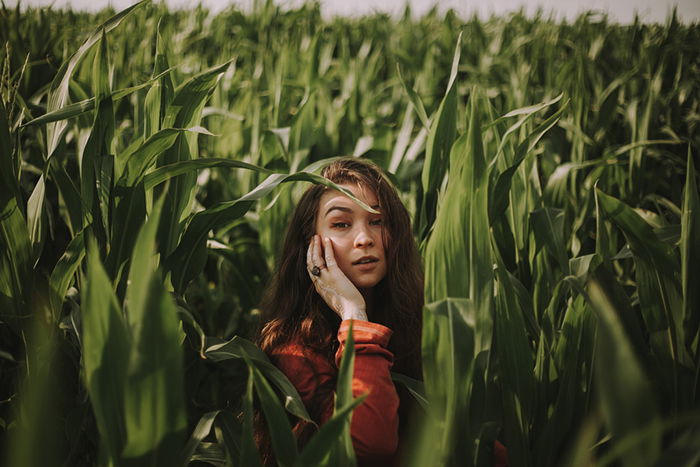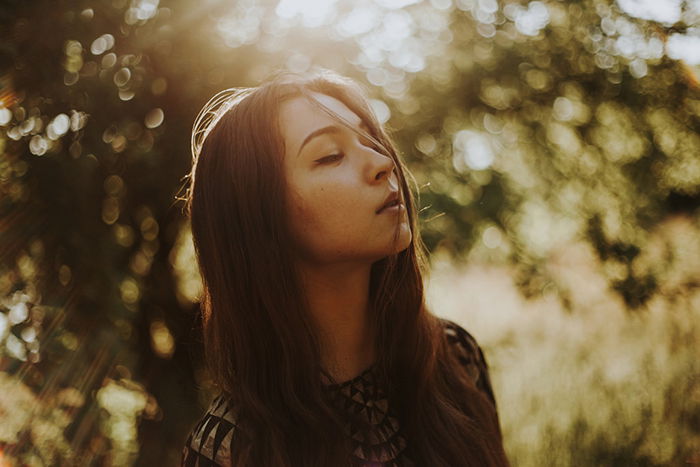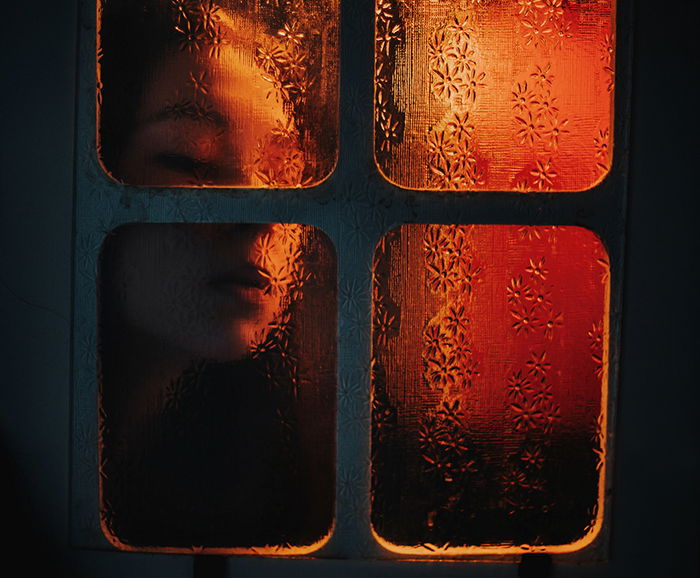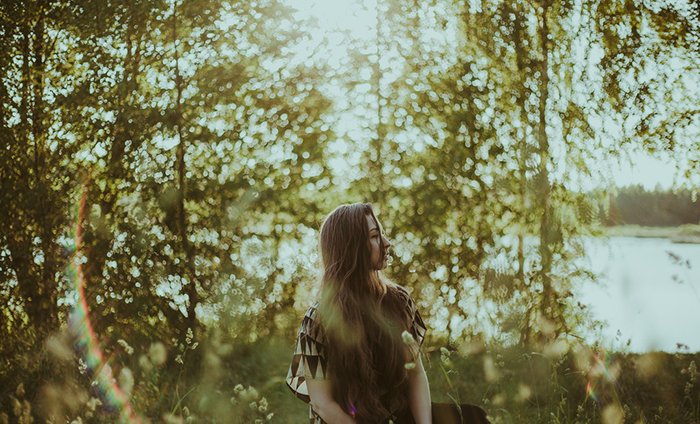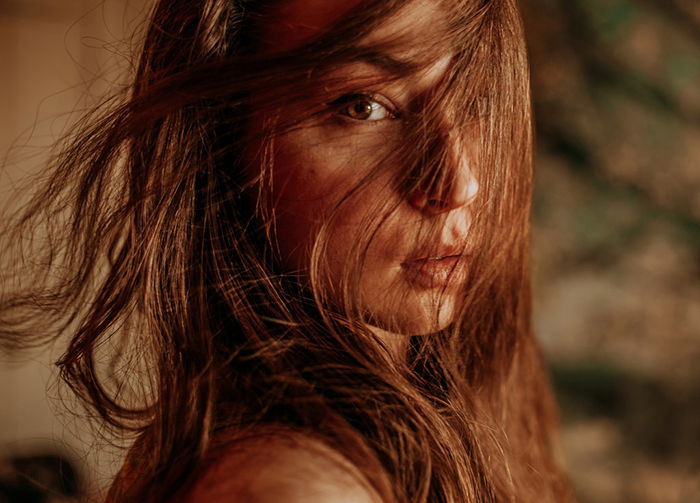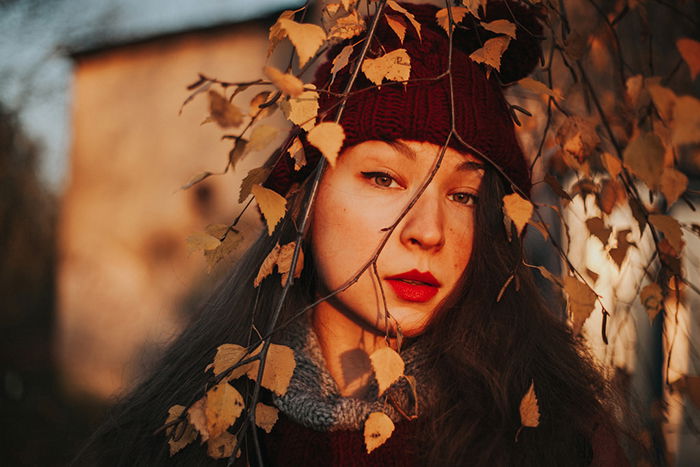Ambient Light Photography: What is Ambient Lighting?
Ambient light is available light. This is often associated with natural outdoor light. It’s also something that plays an important role in locations with artificial light. Ambient light isn’t something you can control or move on your own. Because it’s either fixed or uncontrollable, it’s perfect for photography challenges. Experimenting with different types of ambient light will improve the following photography skills:
Imagination – you’ll learn to make the most of challenging locations; Observation – you’ll understand how to use ambient light to complement your models’ features; Resourcefulness – you’ll be able to overcome challenging lighting situations.
Definition of Atmospheric Portraits
Atmospheric portraits have specific moods. They’ll often make you feel exactly how the photographer wants you to feel. The atmospheres within this genre are very different. They can be gloomy, joyful, or mysterious. They can tell the right story with the help of a specific lighting setup. Or with an unpredictable burst of light. This is why atmospheric portraits work so well with ambient lighting. The lack of control allows room for artistic flexibility. Atmospheric portraits are open to all kinds of portrait photographers. Imagine you’re a beginner who loves taking joyful family photos. You can include both ambient light and atmospheres in your photographs. If you’re an expert who pursues mystery in their work, you can work with artificial indoor lights. These will make your work look even more exciting. Whoever you are, you’ll find something for yourself in this genre.
Types of Ambient Light
Ambient light exists in various forms. This means photographers of all kinds can experiment with it. Here are some of the most popular kinds of ambient light:
Backlight – when a source of light is behind your subject; Window light – any light created next to a window; Door light – any light coming from an open door; Toplight – often found in subways and stores, this light is right above your subject; Golden hour light – shortly after sunrise or before sunset. This light lasts for a limited amount of time and creates a warm glow; Cloudy day light – the soft light created when the sun is partly hidden by clouds; Direct light – artificial or natural, this light is very bright and harsh.
Creating Atmospheres Using Ambient Lighting
You can mix soft atmospheres with mysterious-looking subjects. You can even take joyful photos in locations with very few light sources. This genre exists so that photographers can have fun and reach new heights. Make sure you don’t limit yourself.
Mysterious Atmospheres
Cloudy day light and toplight are your to-go for this type of atmospheric photos. They will help you take mysterious, surreal, and moody portraits. Mysterious atmospheres usually involve a limited amount of light. They rarely reveal a subject’s entire face. If you can’t take photos in a well-lit location, use the available light to create shadows. You can also hide parts of your subject’s face, or emphasise a shape. For instance, cheekbones become even more prominent when they’re lit from above. Textures stand out when they’re placed in front of a bright light source. This is a great opportunity to challenge your portrait photography skills. If you don’t have a well-lit face to work with, leave your comfort zone and find new ways to express yourself. Extra tip: mysterious atmospheres and black & white work brilliantly together.
Dreamy Atmospheres
Dreamy atmospheres make us think of happiness, romance, and friendships. Golden hour light and backlight (or a combination of both) are ideal for creating moods of this kind. Try photographing your subject in front of the sun during the golden hour. You’ll get a burst of warm, vibrant colors. You can recreate this effect using artificial light. Increase your temperature in-camera. Then have your subject stand in front of a bright light source. (My go-to golden light source is a lamp.) You can then intensify the warmth of your final image in an editing program, like Lightroom or Photoshop. Sometimes, too much backlight and not enough front light can result in dull photos. To fix this, hold a reflector right in front of your subject. You’ll avoid casting unflattering shadows on their face. Direct backlight might be too harsh for a professional reflector. When I need a softer alternative, I replace my reflector with a white sheet of paper. It’s simple, but it works! You can’t go wrong with golden hour light. This is especially useful for absolute beginners. If you want to take dreamy, atmospheric portraits, I recommend starting with this time of day. If you want to take it a step further, try to create non-dreamy photos, too.
Soft Atmospheres
Classic, naturally-lit portraits aren’t that challenging to create. This is thanks to window and door light. It’s no surprise, then, that they’re an indoor photographer’s best friend. Shoot indoors if you want to:
Challenge yourself by limiting your sources of natural light; Avoid harsh outdoor weather; Save some time and have a quick but productive photo shoot.
Doors provide more creative control because you can move them. I often use them to play with soft shadows and light. Since windows are fixed light sources, they’re a bit trickier to work with. When taking photos in front of a window, try to focus on angles and shadows. Atmospheric window light can transform a simple portrait into a composited masterpiece. Windows can light up half of your subject’s face, which is great for fine art portraits. They can also light up your subject’s entire face to create classic, well-lit portraits. If you want to add texture to your portraits, have your subject stand in front of a curtained window on a sunny day. The light will cast beautiful shadows on their face. Golden light works for all types of photography, from wedding photography to landscape photography.
Harsh Atmospheres
Direct light will give your portraits contrast and create harsh shadows. Striking photos like these are perfect for photojournalism and street photography. When direct light hits your model’s face, it will highlight a lot of flaws. This won’t be a problem unless your photos are very sharp. In that case, you can edit the skin tones without making them look fake. Do this through frequency separation. This will help you remove any blemishes. But it won’t remove your subject’s natural skin texture. For the record, you don’t have to get rid of flaws and textures. Photojournalism is all about capturing the world as it is. This works well with atmospheric portraits,. Photos of old people in direct light look amazing. This is because of all the textures and shadows the sun creates. There’s no reason to retouch your photos unless you want to. In general, you can use direct light to create shadows and emphasise skin colors. Or you can use it to create strong contrasts. Ambient lighting is available almost everywhere. You can use it in your home, in a store, or in a park on a sunny day. It’s different wherever it appears. You can explore atmospheric portraiture without making your photos look identical and boring. The best thing about ambient light is its availability. It doesn’t demand specific equipment, setups, or times of day. If you’re in the mood to create atmospheric portraits, it’s very likely that you’ll find a way to do so. Take some time to find atmospheric portrait opportunities today. Use a lamp as backlight. Visit your local park on a cloudy day. Go to a store and experiment with haunting toplight. Keep an eye out for atmospheres wherever you go. You’ll find inspiration everywhere and potential in every location. This will improve your observation skills. And it will help you take the most stunning atmospheric portraits imaginable. If you’d like to learn about using flash in outdoor portraits, check out this cool article on high-speed sync.
